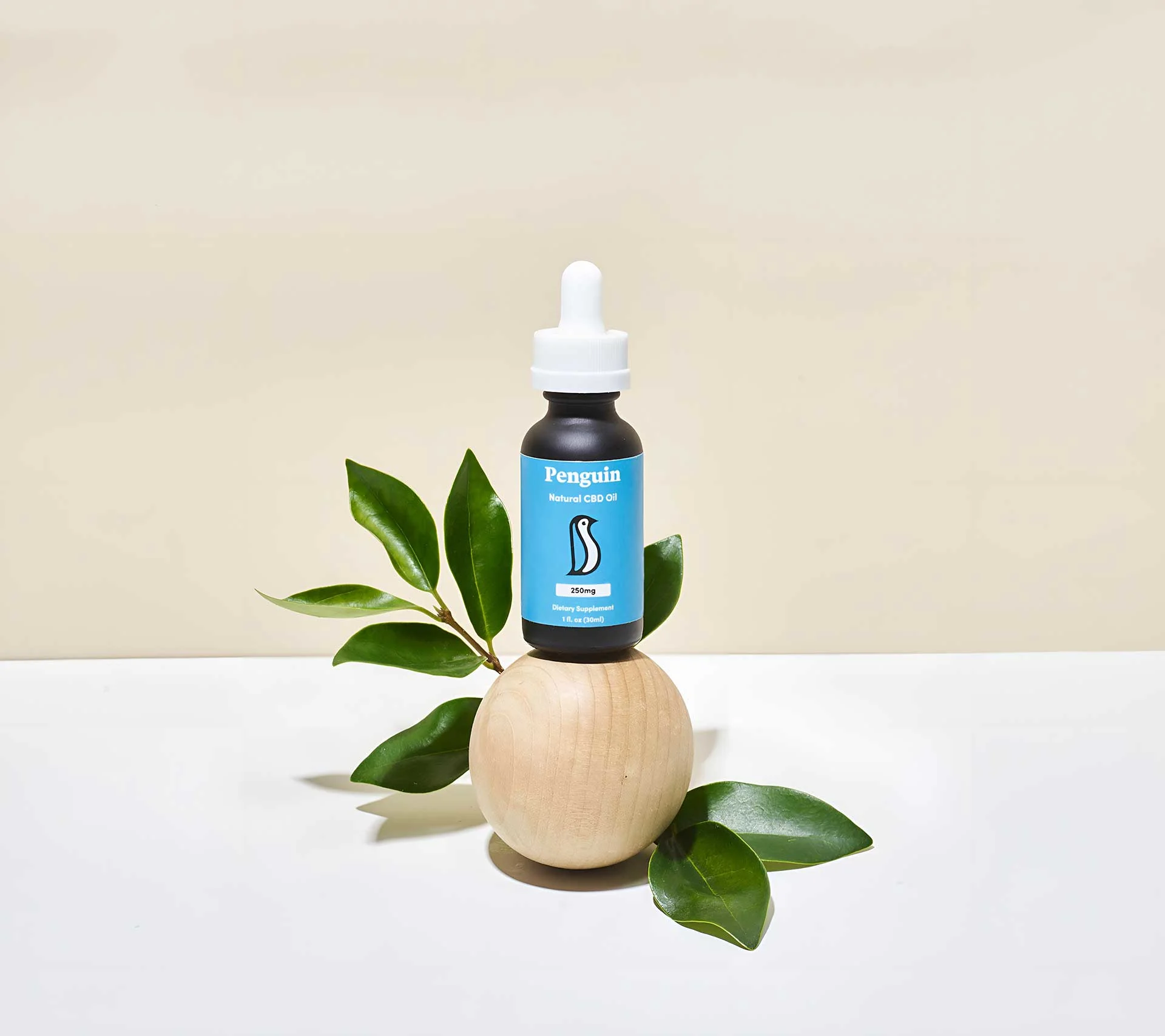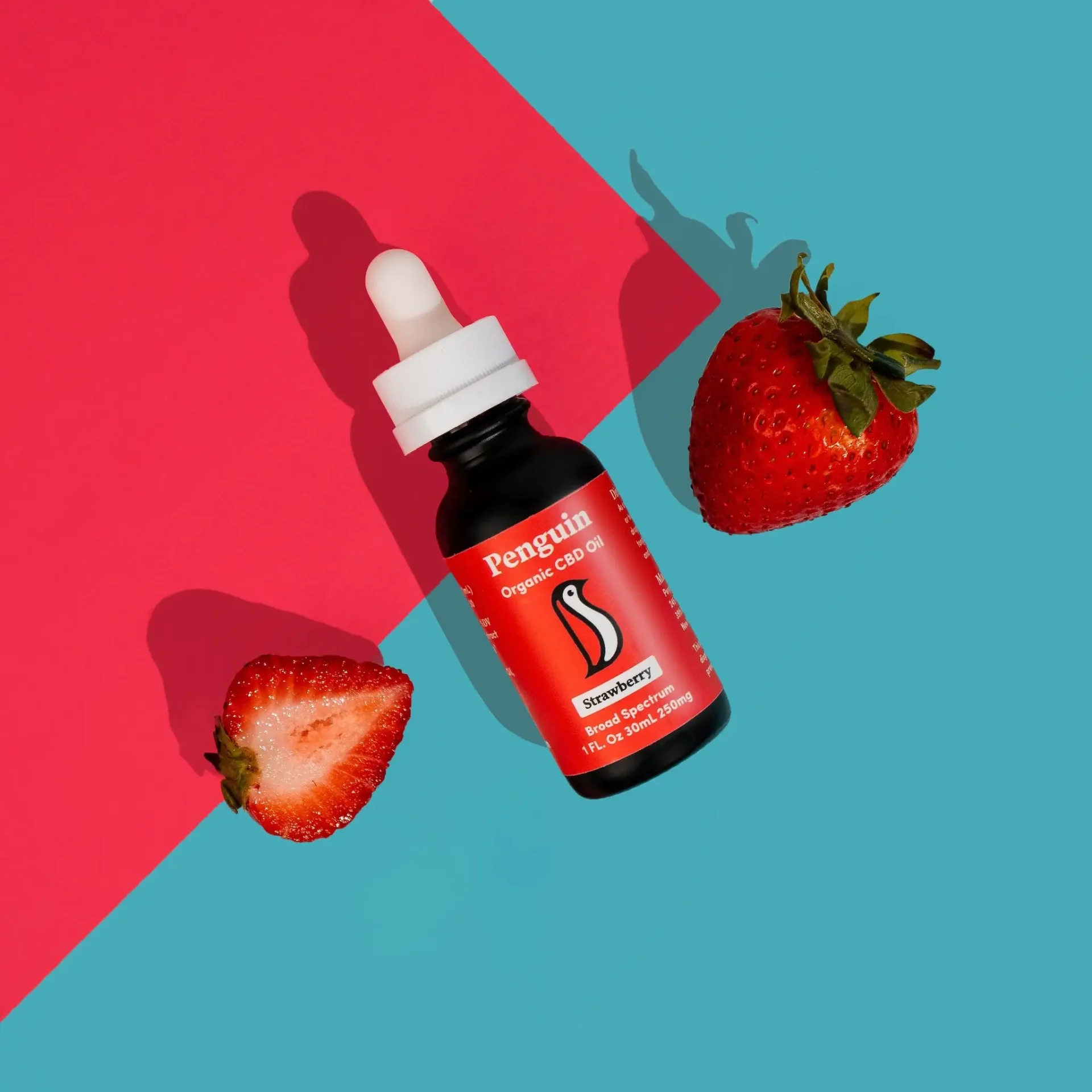What Is the Endocannabinoid System? Here's How It Works
 By Penguin CBD
By Penguin CBDThe endocannabinoid system (ECS) can make it easier to live well. This is because one of the main functions of the ECS is to help your body maintain homeostasis, the internal “steady state” or balance of body systems. The role of the ECS in humans has been described as “eat, sleep, relax, forget and protect.”
The endocannabinoid system is a complicated biological system that uses neurotransmitters (chemical messenger systems for communication between the brain and other parts of the nervous system), specialized receptors for those neurotransmitters and groups of enzymes to help control the levels of the neurotransmitters in the body. It turns out to be one of the most important systems in maintaining human health.
But what is homeostasis? The word comes from two Greek words meaning “same” and “steady”— homeostasis is the processes the body uses to maintain balance, equilibrium and a “steady state.” A reasonable analogy is the common playground seesaw— the body’s seesaw wants to remain balanced and will “add” or “subtract” from one end or the other to maintain that balance.
Homeostasis is complex, partly because there are so many physiological systems competing for the same factors to “add” or “subtract,” partly because many of these need to co-exist, and partly because there are so many environmental stressors in various systems—and the system needs to be quickly and accurately responsive to these stressors.
Think of the “fight or flight” response, which is part of the overall system to maintain homeostasis. If that was not properly controlled, you might be constantly in “fight” mode or constantly in “flight” mode!
The ECS was discovered by scientists studying the effects of the cannabis plant. There may be some distant evolutionary relationship, but the ECS functions with or without plant cannabinoids.
Still eager to learn more? Let's dive right in with our Penguin CBD guide to the ECS:
The ABCs of the ECS
The Cannabis plant likely evolved to produce the cannabinoids to regulate plant defense mechanisms and normal plant physiology. We used to think that Cannabis was the only plant to produce cannabinoids. However, we now know that other plants produce cannabinoid-like substances—technically known as cannabimimetics. These include echinacea, kava kava, flaxseed and the cacao (chocolate) plant.
The discovery of the cannabinoids helped us discover an important part of our physiology: the system known as the ECS. Here is a brief history:
- In 1964, an Israeli scientist, Raphael Mechoulam, isolated and identified THC.
- In 1988, two American scientists, Allyn Howlett and William Devane, found receptors for cannabinoids in the rat brain. To their surprise, the rat brain was found to have more cannabinoid receptors than any other kind of receptor. That first receptor discovered was named CB1.
- In the early 1990s, a second receptor was discovered, and named CB2.
- Since then, several other receptors that bind cannabinoids have been described, but their relationship to CB1 and CB2 is not clear; nor is it clear that their primary role is to bind endocannabinoids.
Humans don’t make cannabinoids. Instead, our cannabinoid receptors bind mainly to two different substances—anandamide (N-arachidonoylethanolamine (AEA)) and 2-arachidonoylglycerol (2AG). AEA and 2AG bind to the CB receptors and help regulate a wide variety of physical and biochemical functions, all regulated by homeostatic mechanisms and processes. Chemically and functionally, the endocannabinoids are significantly different from the phytocannabinoids (plant cannabinoids).
CB1 and CB2 Receptors
Think of receptors as a lock, and of the endocannabinoids AEA and 2AG as the keys that fit into the lock. Endocannabinoids are “made” for the locks (receptors). Other substances that may bind to these receptors just happen to fit the locks or almost fit the locks.
CB1 receptors are found primarily in the central nervous system—the brain and spinal cord—but are also found throughout the body. CB1 receptors are involved in maintaining homeostasis in the musculoskeletal system, with the cognitive functions of the brain, with the perception and interpretation of internal and external stimuli, and with internal defense mechanisms.
CB2 receptors are found mostly outside the brain and are also concerned with maintaining homeostasis in nearly every system of the body. CB2 receptors are also found in the brain and spinal cord—just not as many. CB2 receptors, in general, are more involved with perception and interpretation of stimuli, and maintaining systemic (whole body) homeostasis.
The Endocannabinoids
There are two main endocannabinoids—AEA and 2-AG, though more are known and even more are likely to be described in the future. These endocannabinoids are natural substances, derived from fatty acids like the omega-3 and omega-6 fatty acids.
They bind to CB1 and CB2 receptors, which then produce a chain of biochemical events that result in specific effects, depending on the body system impacted. The endocannabinoids are then degraded at varying rates by enzymes. This is the way the body can regulate the levels of endocannabinoids available. The two main enzymes that degrade the two main endocannabinoids are:
- Fatty acid amide hydrolase (FAAH), which breaks down AEA
- Monoacylglycerol acid lipase (MAG lipase), which breaks down 2AG
Let’s go into a few more details about AEA and 2AG.
Anandamide or AEA
Anandamide is sometimes called the “bliss molecule.” It comes from the Sanskrit word “ananda,” which means internal bliss. It is derived from an omega-6 essential fatty acid, arachidonic acid. It mainly binds to CB1 receptors, with weaker binding to CB2 receptors.
Any sort of external or internal stress tends to increase the levels of AEA in the body. In fact, one reason why chocolate is a comfort food to so many is that it naturally contains AEA!
2-Arachidonoylglycerol or 2-AG
2-arachidonoylglycerol or 2-AG is the second most common endocannabinoid—it appears to be associated with “down-regulating” the effects of external stimuli. It is also involved with emotional expression and energy balance. It binds better to CB1 receptors than to CB2 receptors, but is also reported to bind to several other types of receptors.
Interactions of Cannabinoids and the ECS
Why the focus on the ECS, AEA and 2AG enzymes, and the CB1 and CB2 receptors? The point is that the ECS is an important regulatory system for maintaining physical, emotional and mental health. When we begin to see how the ECS functions, that may provide us with valuable clues to see how other substances may be used to support the homeostatic functions of the ECS.
Can You “Boost” the ECS?
Can you boost or support your own personal ECS?
Yes, you can. Here’s how:
- Diet. If you eat well, your diet should provide all the vitamins, minerals and nutrients you need to be healthy and strong. If you don’t give your body all it needs, you could be in trouble. The ECS uses both omega-3 and omega-6 fatty acids to build AEA, 2-AG and the CB receptors. Since omega-6 fatty acids are easy to find in foods, supplementation with the omega-3 fatty acids can improve the availability of these components of the ECS.
- Make certain lifestyle choices. Avoiding alcohol can improve the state of the ECS because high alcohol consumption has been shown to reduce the levels of CB receptors and can increase the risk of addiction. Exercise is a stress-management tool and can naturally increase the levels of your endocannabinoids.
Clinical Endocannabinoid Deficiency—Can It Explain Some Medical Conditions?
As a general rule of thumb, if a biological system exists, there can be some deficit or deficiency in that system. Alternatively, conditions are likely to be found where that system is overactive. This is one of the areas where homeostasis can be important in balancing both under- and overactivity of a system.
The same is true for the ECS.
There are four basic ways a problem in the ECS can result in a deficiency:
- A defect in the number or function of the receptors
- Degradation of endocannabinoids is too rapid, so the endocannabinoids do not bind effectively to the receptors
- A defect in the production of endocannabinoids
- A combination of any of the above
How Do Cannabinoids Affect the ECS?
Cannabinoids can bind directly to the cannabinoid receptors—we know this because it is how the endocannabinoids were discovered.
The details of binding to various receptors are currently under study around the world. The binding can be compared to a “lock and key” system, but the lock and key analogy only goes so far. Receptors are molecules in three dimensions. Ligands, like AEA, 2-AG and other substances, may fit right into “pockets” made by the receptor.
Another group of substances may bind to other areas on the receptor and change the shape of the pockets. In that way, they change how the natural endocannabinoids interact on the receptors, which in turn change the effects of AEA, 2-AG and THC.
Another complicating factor is that substances can also work indirectly by slowing down the enzymes needed to break down AEA and 2AG. In effect, this leaves you with higher levels of both endocannabinoids. That may mean that the effects of the endocannabinoids last longer than they would under other conditions.
An increasing number of studies have reported a variety of effects for cannabinoids as a general class of phytochemicals.
There is still plenty to learn about the ECS—and plenty to learn about the potential effects of a variety of substances that can affect the ECS.










